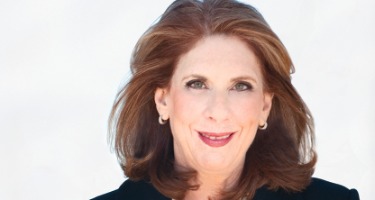In the prologue to former Chief Justice of the Supreme Court of Canada Beverley McLachlin’s 2019 memoir, Truth Be Told, she recounts her first encounter with the late former United States Supreme Court Justice Ruth Bader Ginsburg (a.k.a. the “Notorious RBG”).
When the two women met, Ginsburg pointedly asked: “What is the history of women’s legal rights in Canada?” McLachlin paused before replying, “It started with the Famous Five and the Persons Case.”
What About “Persons”?
The colloquially known Persons Case, as most first year law students soon discover, refers to the 1929 decision that recognized that women were, in fact, “persons” under Canada’s constitution and thus capable of holding public office.
The constitutional challenge arose after Emily Murphy, a member of the so-called Famous Five, was appointed as a city magistrate in Alberta in 1919. On her first day on the job, a male lawyer reportedly questioned her ability to preside over the courtroom, arguing that she was not a “person” under the law and could therefore not sit as a judge.
Exactly 70 years after the Famous Five began their fight to be recognized as “persons”, McLachlin was sworn in as the third female justice of the Supreme Court of Canada. In 2000, she was the first woman to be appointed Chief Justice of Canada.
And while Canada’s first female lawyer, Clara Brett Martin, was admitted to the Law Society of Upper Canada in 1897, today it is estimated that nearly half of all Canadian lawyers are women.
However, women’s representational equality in the legal profession belies numerous remaining inequities and challenges.
What About Pay Equity?
For instance, pay equity remains a pressing issue in the legal profession. According to the most recent data, Canadian women earned 93% of men’s salaries across all stages of their careers among all types of law firms and, in the largest private firms, women earned 91% of men’s salaries.
Marie-Claude Landry, a former Quebec lawyer and current Chief Commissioner of the Canadian Human Rights Commission, commented on the issue, stating: “Pay inequity is first and foremost a difficult issue and it’s multi-factorial. We have multiple explanations, many of which fall into one of two categories that economists refer to as the ‘glass ceiling’ or the ‘sticky floor’.”

Erin Cowling, an Ontario lawyer who left big law to eventually found her own company of freelance lawyers, Flex Legal, opined that a lack of pay transparency, along with inequities in discretionary payments such as bonuses, exacerbate the issue. She said, “I think it’s getting better but I think pay transparency would really help. If I knew my male colleague of the same year or junior to me was making more money, then for sure I’d go in and negotiate a better salary. But if I don’t know what other people are making then how do I know I’m not making as much?”
What About the “Exodus”?
In addition to the issue of pay equity, statistics point towards what has been called the “exodus” of women from the legal profession. The Canadian Bar Association has cited three main reasons why women leave law: discrimination, carrying a heavier load of childcare and domestic duties, and a lack of work-life balance.
Kristen Greer, who is Best Lawyers’ senior research manager, notes that a large number of female associates who start out in firms tend to not matriculate into senior roles. In fact, according to the Law Society of Ontario’s 2018 annual report, about 12.4% of lawyers in Ontario were male law firm partners, compared to only 4.3% of female partners.
Landry, who left her position as a lawyer at a mid-size firm to start her own practice prior to joining the Canadian Human Rights Commission, identified with some of these issues. She observed, “I had to fight all my life to prove that I was as good as men.”
For her part, Cowling stated, “The exodus of women, or the pushing out of women from law, is kind of a chicken or egg scenario. Do women leave because we don’t want to put up with the crap anymore, or is it the firms who are kind of expecting the women to leave so that’s why the crap starts?”
Cowling also expressed frustration at narratives that imply that women leave law because they can’t “hack it”. In her view, the issue needs to be reframed, stating, “It’s not a problem that women need to fix, that we need to fit into this archaic model. I think the law firm model needs to change.”
What About Diversity and Intersectionality?
The challenges women face, however, are far from homogeneous. As noted by both Landry and Cowling, the issue must be viewed through an intersectional lens. Referring to her blog series, Women Leading in Law, in which she has interviewed many female lawyers about their experiences, Cowling observed, “Everyone in that series had different challenges than, let’s say, a white male. I wouldn’t say that all were child-bearing related or work-balance related, a lot was discrimination and unfair treatment, either from their clients or the law firms.”
Landry expanded on the issue, stating, “The intersectional lens is really important. We know as an example that racialized women will face challenges more than non-racialized women. We know that women with disabilities will face more challenges than a person with no disability. Where we need to be careful is not being trapped into thinking that there is just one answer. It’s a multi-factored thing and we need to address all of that. Men and women and everyone need to be involved, from leaders to managers to CEOs.”
Greer echoed this observation, opining that the issues faced by female lawyers cannot be solved in isolation.
What About Good News?
However, both Landry and Cowling also expressed an optimistic view of things, with Cowling stating, “With technology, and now with the pandemic, we can all work from home and set up our own firms. It’s pretty easy to have a little more control over your legal career now than maybe previously. So I think there are more opportunities now as well.”
For her part, Landry observed, “I’ve seen some positive conversations in organizations and big firms about how they will retain [women]. Because it’s one thing to hire a woman, but the challenge is often to make sure that she will stay in the firm, and she will have the same opportunity to thrive as a male associate. We are seeing positive change because I think that people understand that if women have the same opportunity as men, then the economy, society and the country will be better.”
Greer echoed this sentiment, stating that her research over the past three to five years has shown a growing desire for diversity in law, noting “more of an awareness of a need to adapt better” and that law firms are looking around and observing “wait a minute, [the current model] isn’t sustainable or appropriate”.
Finally, while Landry expressed hope that the existing culture of law will change to better adapt to the needs and rights of women, Cowling observed that women are simply forging their own paths, stating, “I think women are doing their own thing now, we’re doing our own networking, we’re doing our own stuff.”
Sara Collin is a Quebec-based lawyer, specializing in legal writing, editing, research, and translation throughout Canada.































